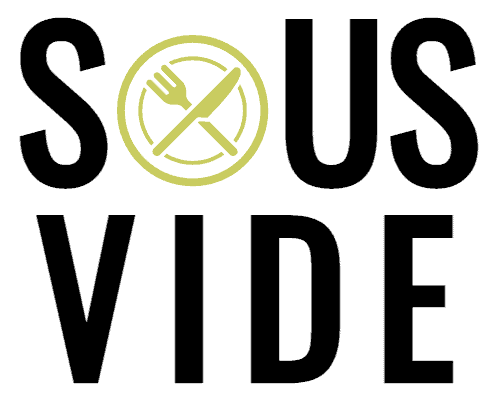There is a lot of public confusion when it comes to food safety for bacon. Some folks say it’s perfectly safe to eat raw bacon, but the truth is that it can be quite dangerous.
In my experience as a ServSafe certified food handler by the National Restaurant Association, I can tell you plainly that it’s better to be safe than sorry.
In this article, I’ll explain the health risks of eating raw bacon and what to do if you recently ate raw bacon. If you’re wisely reading this before playing the role of Evel Knievel, I’ll also walk you through how to ensure your bacon is cooked safely.
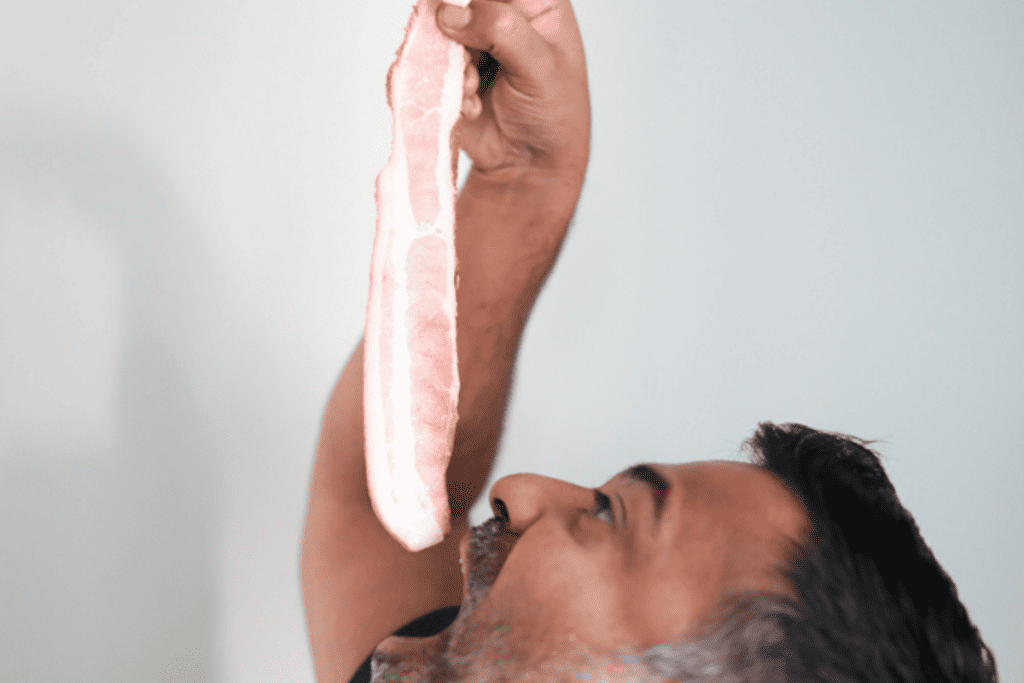
Table of Contents
Can You Eat Raw Bacon?
The short answer is no! You cannot eat raw bacon that you find in the refrigerated meat section of the grocery store. Let me explain why.
At the butcher, bacon meat is soaked and cured using salt, nitrates, sugar, smoke, or other preservatives to extend the shelf life and prevent spoilage. Then it’s cut into strips, packaged, and (usually) sold raw.
Over time, pathogens like harmful bacteria, viruses, and microorganisms can grow on the surface of the food. Eating raw bacon will increase your risk of contracting a food-borne illness from these pathogens.
Health Risks
Food poisoning is the most common problem caused by consuming raw or undercooked meat, but there are other more serious risks to be aware of.
- Toxoplasmosis: An illness caused by a parasite that can have flu-like symptoms. It’s especially dangerous for people with a weak or compromised immune system and causes encephalitis, a brain inflammation.
- Trichinosis: This disease is caused by a specific roundworm. It can trigger symptoms like diarrhea, vomiting, weakness, and eye swelling.
- Tapeworms: These parasitic worms live in your intestine and cause abdominal pain, diarrhea, weight loss, and even intestinal blockages in some cases.
- Cancer risk: Consuming raw bacon can lead to a greater chance of ending up with cancer, especially colon cancer. Since bacon is a cured meat, it contains high amounts of salt and preservatives, which puts you more at risk, especially if you consume excessive amounts.
- Fever: In some cases, you may contract a mild fever and upset stomach. This happens when your body is dealing with an infection. While not as serious as some of the others on this list, it’s still not fun.
If these illnesses are not treated or taken seriously, they can be fatal too. So if you experience symptoms, seek medical attention immediately.
Of course, you can still fall sick from cooked bacon. Before we jump into how to safely cook bacon, let’s make sure that bacon in your fridge isn’t spoiled bacon.
How to Safely Cook Bacon
There isn’t one correct way to safely cook bacon.
However you prepare it, be sure to keep raw bacon separate from other foods and clean the work surface, utensils, and your hands before and after handling it.
If you’re unsure about how to cook bacon safely while retaining its amazing taste, there are a lot of cooking methods you can use as long as you cook it all the way through.
Bacon Internal Temp
Just be sure to cook bacon until it reaches an internal temperature of 145°F (62°C).
Pan-Frying
Place the bacon strips in an already hot pan over medium heat.
A heavy bottom pan like a cast iron skillet works best, just make sure it’s properly seasoned before you get started. It will save you a mess.
Don’t crowd the bacon together since this may prevent it from cooking evenly. Cook it for a few minutes on each side, until the bacon is crisp.
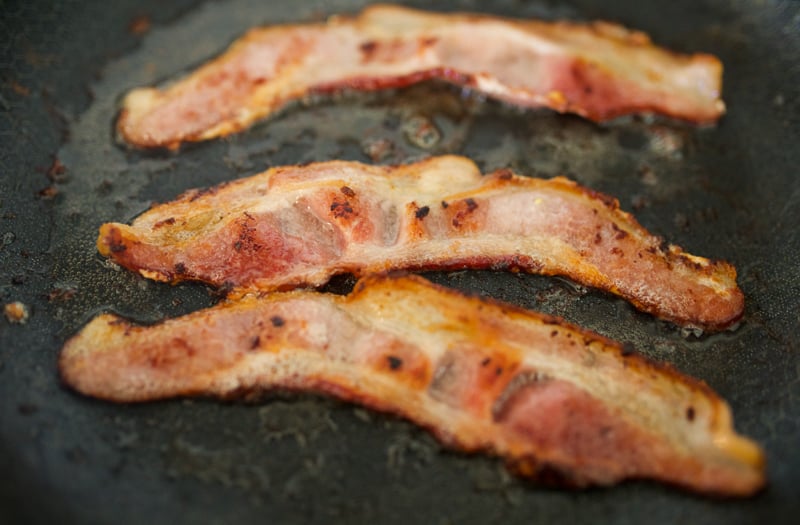
Once you’re done, place the strips on a plate with paper towels to absorb all the excess grease.
Oven-Baking
If you’ve got a lot of mouths to feed, oven-baking your bacon will make it substantially easier to prep large quantities at once.
- Preheat the oven to 400 degrees Fahrenheit (204 degrees Celsius).
- Line a baking tray with aluminum foil and lay the bacon strips on it.
- Bake for 15-20 minutes or until it is cooked all the way through or until it reaches the desired crispiness.
You can also cover the bacon with aluminum foil before putting it in the oven. This helps keep the oven clean of splatter.
Microwave
While probably not the tastiest method, microwave-cooking bacon may be the quickest way. At least it is if you only have a few pieces to prep.
- Place a paper towel on a microwave-safe plate. Then lay the bacon strips on it.
- Microwave it on full power for 40-60 seconds.
- Flip the bacon, and microwave for another 30 seconds if it isn’t cooked through.
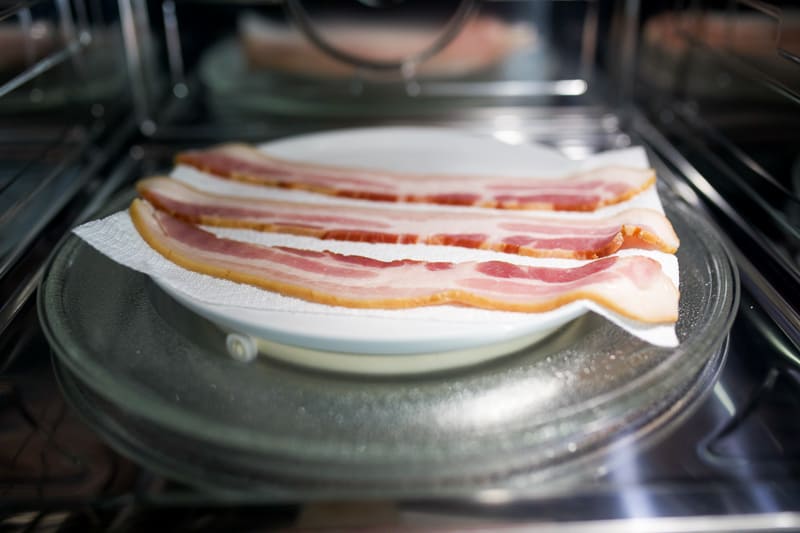
Although you can only heat small quantities at once, this method is ideal when cooking for one to two people.
Sous Vide
Cooking bacon in a water bath is incredibly easy (and delicious). The only challenge is that you need to have the foresight to start cooking the night before. It needs at least 8 hours to work properly.
The major benefit of sous vide bacon is that you can get the exact tenderness you love. You can then store the bacon or immediately finish it by crisping the outside with a quick sear on seasoned cast iron. Either way, it’ll only take about a minute to finish whenever you’re ready to serve.
The sous vide bacon will last over a week in the fridge or for a few months in the freezer. Just remember to thaw bacon before finishing in a pan for delicious bacon in a minute.
We’ve detailed the full process of cooking sous vide bacon here.
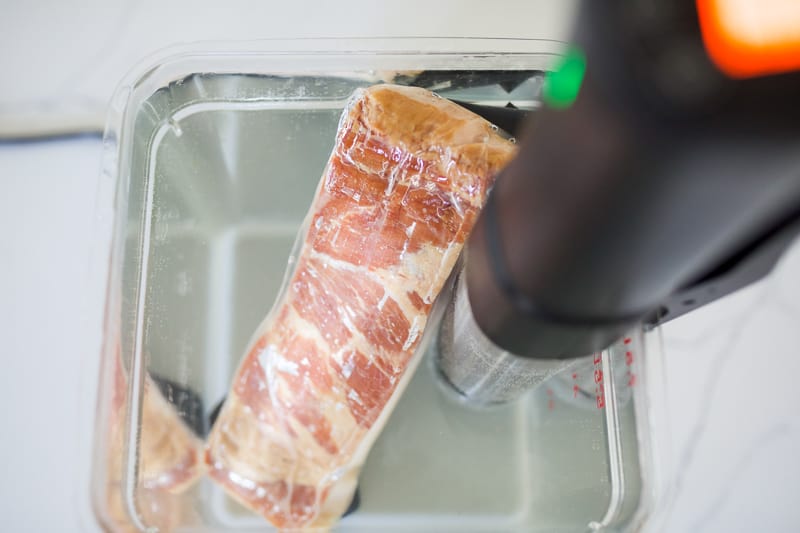
It’s incredibly easy, repeatable and can be done more than a week in advance and finished in a minute. It also allows you to flavor bacon in ways that aren’t possible with other cooking methods.
Reheating Bacon
There are a lot of ways to reheat bacon. The key of course is how to do so while keeping the bacon crispy without drying out. Find my recommendations on how to reheat bacon here.
Raw Bacon FAQs
Bacon is salt-cured meat that is often smoked. Don’t eat it raw. You can contract food poisoning, fever, tapeworms, trichinosis, or other food-borne illnesses. It’s safest to cook your bacon before consuming it.
Unfortunately, no. You should not eat raw bacon right out of the package. There is a high risk of food-borne illnesses if you eat raw bacon. If the package specifies that the bacon is pre-cooked, you can consume it as it is.
You can eat ham without cooking because it is not really raw. Most ham you find in the market is heavily cured that it actually gets cooked in the process.
Bacon is only lightly cured in salt with preservatives like nitrates and nitrites only to give it a longer shelf life and its signature flavor. The preservatives remain in the bacon without cooking, making it unsafe to eat raw.
Alright, now that we’ve established
